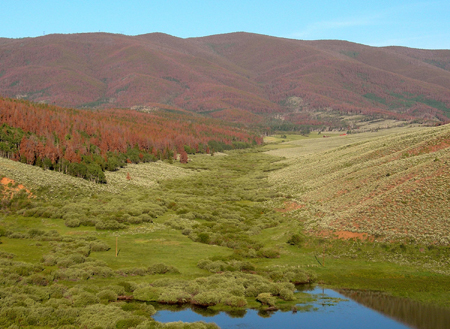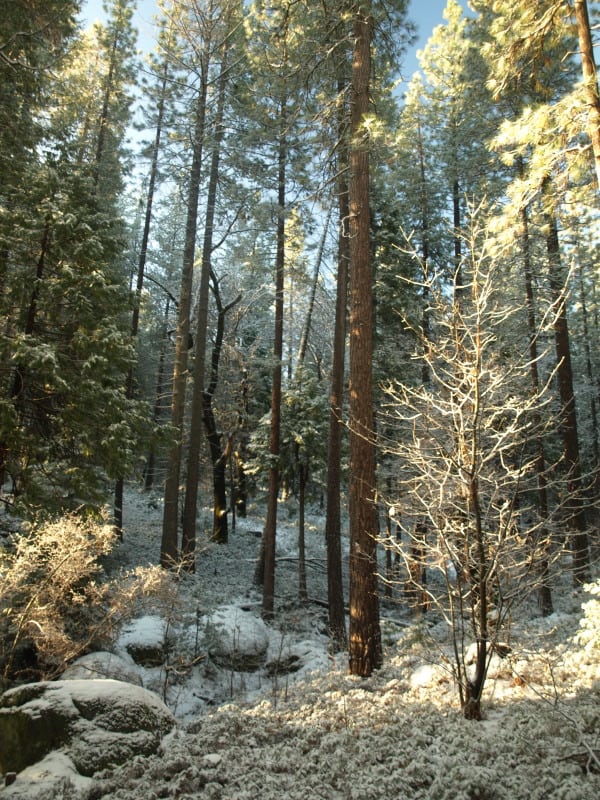
P.S. You gotta love someone quoting Voltaire in an article about Colorado coal mines!
The merits of methane harvesting
A proposal before the Senate seems like a no-brainer, but environmental groups are inexplicably against it.
Posted: 03/18/2012 01:00:00 AM MDT
By Allen Best
The French philosopher Voltaire in the 1700s warned against letting the better, or perfect, be the enemy of the good. That advice would seem to apply to an attempt by environmental groups in Colorado to block a market mechanism that could yield immediate reductions in emissions of a powerful greenhouse gas.
The proposal going before the Colorado Senate this week is whether to expand the state’s renewable portfolio standard to include electricity generated by burning methane emissions being vented from coal mines, both active and abandoned. The current legislation already allows electricity produced by burning methane emitted by landfills.
Methane is a potent greenhouse gas. The Environmental Protection Agency says the heat-trapping properties of methane are 21 times greater than that of carbon dioxide, the more common greenhouse gas. That means generating just minor amounts of electricity from coal-mine emissions could substantially reduce Colorado’s emissions of greenhouse gases.
Energy analyst Randy Udall, who has been working the numbers of coal-mine methane for a decade, calculates just 5 megawatts of electricity generated from coal-mine methane emissions, at a capital cost of $10 million, would offset more carbon than all the solar so far installed in Colorado as of 2010, which has cost roughly $700 million. Total methane harvesting from coal mines near Paonia could produce 20 megawatts, using fairly simple technology, say advocates, and, with more challenge, up to 50 megawatts.
That’s an important point to digest. In terms of reducing the risk to our climate during the next century, just a few megawatts planned at the West Elk Mine could have as much impact as all the solar panels erected on rooftops at DIA and everywhere else in Colorado so far. As Udall puts it, renewable energy is the means, not the end unto itself. The goal is to reduce greenhouse gas emissions.
This bill’s politics has the bewildering aspects of a Mobius strip. Introduced by one of the most conservative members of the legislature, Rep. Randy Baumgardner, R-Hot Sulphur Springs, House Bill 1160 passed the House by a 34-29 vote. Only Rep. Wes McKinley, the self-described cowboy from southeast Colorado (that’s what it says on the legislature’s website), bucked fellow Democrats to join Republicans, who were unanimous in support.
Now, in the Senate, it is sponsored by Sen. Gail Schwartz, D-Snowmass Village, whose base includes some of the most diligent global warming warriors in the state.
Udall has to be considered one of those warriors, and it’s a further irony that he is aligned in this case with Bill Koch, owner of the nearby Elk Creek Mine and a member of the family that has been stirring the undertow of opposition to climate-change action. However, there’s no evidence that Koch has been involved in this case. <note Allen Best corrected this story to clarify that Koch is the owner of Elk Creek Mine and not the West Elk Mine>.
Are you confused? You’re not alone. Del Worley, general manager of the Glenwood Springs-based Holy Cross Energy, an electrical cooperative that provides electricity to the Aspen and Vail areas, says he’s baffled. “The politics are mind-boggling to me,” he says. “If you’re truly trying to stop global warming, this is one of the best bills out there. It’s not a giant resource, but why waste it? It should be a no-brainer.”
Regardless of whether HB 1160 passes, Worley’s co-op has agreed to buy 3 megawatts of electricity produced by burning coal-mine methane near Paonia. Like other co-ops in Colorado, Holy Cross is required to provide 10 percent of its electricity from renewable sources by 2020. Holy Cross exceeded that mark last year. Now, directors have adopted an internal goal of 20 percent by 2015. Although terms have not been disclosed, they are apparently willing to pay a higher price to achieve that, both with a biomass plant proposed at Gypsum and with purchase of the methane-produced electricity.
Driving this bill is Tom Vessels, a Denver-based entrepreneur who now heads North Fork Energy. He was stirred to innovate by what he saw in Germany, where coal-mine emissions are harnessed to produce electricity. The same is true in Australia and China. But in the United States, almost nothing has happened, he says.
This is despite a 2004 EPA report that found active mines contributed 10 percent and abandoned mines 5 percent of all U.S. greenhouse gas emissions. (This is from emissions of methane, not from burning coal).
While he is also tapping methane from an inactive mine in Pennsylvania, Vessels argues that Colorado can demonstrate how to tap the existing resource — and reduce greenhouse gas emissions.
To make the numbers work, however, Vessels needs more customers than Holy Cross who are willing to pay a premium for electricity. He approached more than a dozen utilities. All rejected him — because they couldn’t count it toward their renewable portfolio standard mandate.
His other income stream would be carbon offsets, mostly generated by the California market.
Vessels charges that the existing renewable portfolio standard has now become the “business as usual” model. It’s thwarting innovation and stifling opportunity.
“It has been said that (renewable portfolio standards) were originally passed with the goal of supporting the new energy technologies of the legislature,” Vessels said. “The legislature a few years ago decided that solar and wind were the technologies of the future. But the Germans kept their eye on the ball and said, ‘If we want to reduce greenhouse gas emissions, we do it by building up wind and solar — and these other things.’ I think here in Colorado we missed the ‘and other things.’ ”
Among the powerful environmental groups opposing HB 1160 has been Western Resource Advocates. John Nielsen, the group’s energy program director, argues that the existing legislation is not well thought out. While the goal of reducing methane emissions is a worthy one, he says, it’s not clear the bill will actually achieve it — and might hinder better efforts in the future. “Are there better tools out there to get this done?” he asks.
But there’s another possibility that seems to bother Western Resource Advocates and other groups. If coal-mine emissions can be considered as renewable, he says, then does that mean that fugitive emissions of methane from natural gas drilling and pipeline transport can similarly be tapped someday to produce electricity under renewable portfolio standards?
Nielsen agrees that this tempest in Colorado can be considered a forerunner of a broader national debate about the clean-energy standard proposed by President Barack Obama in his 2011 State of the Union address. That debate will be about whether technology should be agnostic in reducing greenhouse gas emissions. At its heart, the debate is whether we can realistically hope to completely eliminate our dependence on fossil fuels anytime soon. Most sober assessments have concluded that it will be impossible. That point is even more emphatic if the Chinese, Indians and Indonesians are brought into the conversation, as they absolutely must be.
Can we someday wean ourselves entirely off fossil fuels? Perhaps, but we’re going to have to live with coal for a few more decades, possibly longer. The current pushback by environmental groups and their Democratic allies smells of a litmus test of ideological purity. It confuses battles with the war.
If the war is against dangerous accumulations of human-caused greenhouse gas emissions, this is a bill that should land on the desk of Gov. John Hickenlooper.
Allen Best, a journalist in Colorado for 35 years, publishes an e-zine called Mountain Town News.
Read more: The merits of methane harvesting – The Denver Post http://www.denverpost.com/opinion/ci_20183852/merits-methane-harvesting#comments#ixzz1pVs0TxbS






